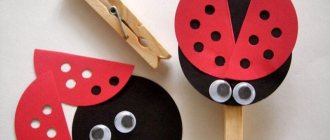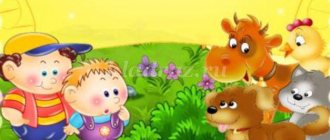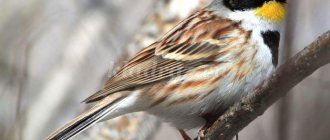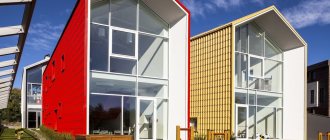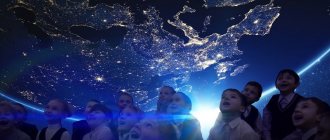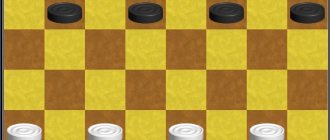Project “Cartoons by children’s hands”
Project
"Cartoons by children's hands"
Educator:
Simonova Tatyana Ivanovna
Children's age: 4-5 years
Project type:
creative-cognitive, group
.
Project implementation period: long-term (2019-2020 academic year)
Contents of the OO Federal State Educational Standards for Education: cognitive and creative development.
Relevance of the project. Formulation of the problem.
From the experience of teachers of preschool educational institutions, it is well known that respect for the child’s personality, acceptance of his goals, requests, interests, creation of conditions for self-determination and self-realization actively develops creativity. Protected from the violent interference of others, the life activity of children is manifested in unique forms of play, fairy tales, travel, adventure, and experimentation. Project activities make it possible to implement the principle of an optimal relationship between development determined by the actions of an adult and self-development determined by the child’s own activity
Creating a cartoon with preschool children is a modern type of project activity that is very attractive to children. By carrying out this type of project activity, we support any desire of children for creativity, we have the maximum possible influence on the formation in each of them of a free creative personality, a creative person, as the most expensive and sought-after “product” of education in modern society.
Analysis of psychological and pedagogical approaches to the process of organizing preschool education and training in the light of the implementation of the Federal State Educational Standard, observations of secondary group students during educational activities showed an insufficient level of development of children’s creativity and, in connection with this, the need to use new integrative technologies in the pedagogical process, focused on the child’s personality, on the development of his creative abilities. One of these technologies is the creation of cartoons with children.
Objective of the project:
updating the pedagogical process aimed at creating optimal conditions for the development of creative abilities of preschoolers through the creation of cartoons.
Project objectives:
To form in children a basic understanding of the mysteries of animation.
Introduce the professions: screenwriter, animator, camera operator, editor.
Enrich children's vocabulary with the concepts: “filming, script, frame.”
Develop cognitive, artistic and aesthetic interest in creating cartoons.
To develop proactive creativity and the child’s ability to solve any issues in a non-standard way.
Develop creative thinking and imagination.
In the process of research work on computer science “Cartoon with your own hands”, a 4th grade student was given the goal of learning more about the new genre of animation - computer animation, understanding how drawings “come to life” and trying to create her own cartoon.
More details about the work:
In a research paper on computer science, “Do-It-Yourself Cartoon,” the author describes the history of the appearance of animation, studies theoretical information about animation and animation, and studies the types of technologies that are used to create a cartoon.
In the proposed computer science project “Cartoon with your own hands,” the author sets tasks aimed at collecting information on the history of animation, studying different types of animation; familiarization with the main stages of creating cartoons; mastering some artistic techniques, modern technical means and computer programs necessary for creating animated films.
The results of this study can be useful as educational material, as well as for computer science lessons, classroom hours and leisure activities.
Table of contents
Introduction 1. From the history of animation 2. Technologies for creating animation 3. Working on a cartoon. 3.1 Analysis of the results of a survey about cartoons. 3.2 Creating a cartoon Conclusion References Appendices
Introduction
We live in an age of technological miracles. The computer occupies an important place in the life of a modern person.
One can argue for a long time about the benefits and harms of universal computerization, but one way or another, the computer has already become firmly entrenched in our lives - in the lives of the younger generation. Children watch films and cartoons, read books, write essays, communicate with friends, and play. All this using a computer!
My parents believe that this has a negative impact on the child. But on the other hand, you can’t do without computer literacy in the modern world! Then we decided to use the computer as a convenient tool for solving creative problems.
There is such a direction in Art - “computer graphics”. I was wondering, how are cartoons created in the genre of computer graphics?
My mother and my supervisor suggested that I get acquainted with the history of animation and find out what types of animation exist. I became interested and began to look for answers to these questions.
Object of study : animation as a special type of cinematic art.
Subject of research : the process of creating an animated film.
In my work I used the following methods :
- Studying literature.
- Watching videos.
- Study and analysis of the simplest animation technologies.
- Shooting your own cartoon.
- Analysis of the obtained result.
Goal : learn more about the new genre of animation - computer animation, understand how drawings “come to life” and try to create your own cartoon.
Tasks :
- collect information on the history of animation, study different types of animation;
- get acquainted with the main stages of creating cartoons;
- master some artistic techniques, modern technical means and computer programs necessary for creating animated films;
- summarize the results obtained.
Hypothesis : with accessible technical support, creating thematic animated films is accessible even to a child.
Research methods : studying literature on this topic, searching online resources, observation, comparison, practical work.
Relevance . Modern children can use a computer not only for games, but also as a tool for learning and solving creative problems. You can create cartoons, do web design, create your own music, digital painting and much more, depending on your personal interests. Thus, spend your free time profitably, diversify your leisure time and acquire a new hobby.
Stages of work on the project
- Collection and analysis of information (questioning of different age groups, studying literature, Internet resources)
- Generalization of the obtained data.
- Preparation for defense: studying software, creating a cartoon, etc.
- Defense (confirmation of the hypothesis).
Go to section: 2. History of animation
Project “Cartoons: what is it?”
- March 26, 2011
Competition "Children's Research Project"
Nomination "Aesthetic Cycle"
I, like all children, really love watching cartoons. I can’t even count the number of cartoons I’ve watched. And it seemed that I knew everything about them... But one day, after another viewing of my favorite “SonixX”, I thought: what are cartoons? I asked my classmates, but they also found it difficult to answer...
First I went to the library, where I read in the dictionary that cartoons, a cartoon, an animated film, an animation are all the same thing... this is what animation is called in our cinema, translated from Latin it means “soul”, “animation” or “revival” "
I looked for information about cartoons from various sources: books, the Internet, educational television programs.
I became very interested and wanted to try myself as an animator. The plot of my cartoon is simple: a plot about a multibot dance competition. For a long time I couldn’t decide what kind of main character would be: drawn, plasticine, puppet or computer. And I decided to make three completely different heroes: Rissundo, Plastillinius and Robo.
Lighting fixtures are included. The camera is charged. The filming process has begun. More than 2 thousand frames were shot for our five-minute cartoon. After all, in order for the character’s movement to seem smooth, a very fast frame change is required - 24-30 per second!
The resulting images were processed on a computer using a special program, where frame changes occurred at a certain speed. Musical accompaniment was selected. Voices were recorded and overlaid onto audio tracks... Titles were drawn up.
And now my own cartoon is ready! I was a screenwriter, a director, an animator, a graphic artist, a designer, an announcer, a sound engineer, a video and photo operator, and even a producer... Oh, and it’s not an easy job to make cartoons... How it turned out is up to you to judge. And now I know exactly what a cartoon is. Cartoon is talent and creativity, hard work of people and a very interesting activity!
A survey among classmates revealed the following: just like me, all the kids in my class really love watching cartoons, devoting 15 minutes to 2 hours to this activity every day, but just like me, they don’t know what cartoons are and have difficulty giving a description favorite cartoon (0 – 1 sign).
As the survey in the ascertaining experiment showed, the most beloved and popular animated films among classmates are hand-drawn cartoons of foreign production - 100% (“Spider-Man” for boys; “Winx Club” for girls).
I obtained information about the origin, history of development and production technologies of animated films from various sources (books, dictionaries, educational television programs, videos, the Internet). Personally, during the research alone, I watched about 40 animated films of various content. I defined cartoons as a special type of film art created by animators who use various materials and techniques to create characters, and “animation” occurs through rapid changes of frames.
Various classifications of cartoons were created: according to production technology; goals and objectives; by duration; according to age criteria and interests; by nationality (producing countries)
Using the classification of cartoon production technology, 3 characters were chosen to create our own cartoon at home: plasticine, puppet and hand-drawn. An assembly table was made from scrap materials, and the whole family made the scenery and the main characters.
The plot is simple: Cheburashka's TV report from the intergalactic dance competition of multibots, taking place at our gymnasium, where 3 finalists (Robo, Plastillinius and Rissundo) demonstrate their dancing skills to fiery ri. To create a 5-minute cartoon, it took more than 2 thousand photo frames, which were then edited in a video editor at a certain speed (0.03 s).
After introducing the guys to the project and showing the cartoon, he suggested comparing and evaluating the main characters. Most of all, the kids liked the plasticine hero Plastilinius (53%), Rissundo scored 28%, and the puppet hero Robo 19%! Indeed, the lowest cost, excellent plasticity and visual effectiveness were noted for the plasticine hero, but he easily deformed after each trick and “melted before our eyes” from the heat of the lighting lamps, getting his hands dirty. The puppet hero was more durable, but limited in movements and the ability to perform various tricks.
Creating a hand-drawn character seemed to me the most difficult, painstaking and costly, provided that I used the simplest hand-drawn animation technology - the “overlay” method! It requires special creative and professional skills to draw not only objects, but also the movement of objects, moving objects in space and great patience.
At the defense of the project, I introduced the children to the classifications of cartoons that I had developed, which were presented in the form of reminders. Thanks to this, the guys were able to easily characterize any cartoon. This is also evidenced by a control survey: 89% of children were able to define animation and characterize their favorite cartoon based on 3-5 characteristics (86%).
The knowledge gained during project activities helps me treat animated films with even greater interest, analyze, compare, classify... In the future, I would like to continue researching technologies for creating animated films, for example, master computer 2-D and 3-D animation and, perhaps , create a new cartoon.
Film by Mikhail Polyakov
The theoretical part of the study in the form of a presentation
Author: Mikhail Polyakov, student of grade 2 B at Municipal Educational Institution Gymnasium No. 11 in the city of Yelets, Lipetsk region. Project manager: Marina Vladimirovna Senchenkova, teacher at Municipal Educational Institution Gymnasium No. 11 in the city of Yelets, Lipetsk region. The work was sent by Polyakova’s mother Elena Vladimirovna.
Creative project “Let’s create a cartoon ourselves!”
Olga Migunova
Creative project “Let’s create a cartoon ourselves!”
Project type :
-according to the priority of the method: cognitive -creative .
— by the number of participants: group.
- by duration: short-term - January-April (including preparation)
Project participants : children of preparatory group No. 12, teacher, parents.
Analysis of psychological and pedagogical approaches to the process of organizing preschool education and training in the light of the implementation of the Federal State Educational Standard, observations of group pupils during educational activities showed an insufficient level of development of creativity and, in connection with this, the need to use new integrative technologies in the pedagogical process, focused on the child’s personality, on the development of his creative abilities .
What do children love most in the world? Well, of course, cartoons ! Our childhood is closely connected with cartoons . A cartoon is a fairy-tale world that helps a child develop, fantasize, learn to empathize with characters, learn rules of behavior, and learn to be friends. Cartoons are a very effective tool for child development. Only if it's a good cartoon . With their help, you can engage your child in the learning process. And we also really, really love watching cartoons .
The technology of creating a cartoon was introduced to the teachers of kindergarten No. 132. They showed their cartoons and talked about their work experience.
We decided to try to create our own film . But how to create ? Where to start? What are the secrets of creating cartoons ?
We had to answer these questions as we worked.
To work together, it was necessary to interest the children. The novelty of the environment, a variety of materials, new and original technologies interesting for children, the opportunity to choose - this is what helps prevent monotony and boredom in children's activities, and ensures the liveliness and spontaneity of children's perception and activity. to create a new situation every time so that children, on the one hand, can apply previously learned skills, and on the other, look for new solutions and creative approaches .
Creating a cartoon is a multifaceted process that integrates various types of children's activities: speech, play, cognitive, visual, musical, etc. As a result, children develop such significant personal qualities as curiosity, activity, emotional responsiveness, and the ability to control their behavior , possession of communication skills, etc. This is an effective method, since such activities will be remembered by children for a long time and will contribute to the development of fine motor skills, objective activities, creative , aesthetic and moral aspects of the personality.
Stages:
Stage 1 “Problem”
Definition of the problem, formulation of the goal, determination of the content of the activity, tasks of the project activity .
Children's problem - They love to watch cartoons , but do not know how they create them .
Pedagogical problem - Children have a strong interest in cartoons , but do not have a clear idea of the stages and professions of creating a cartoon .
Children's goal: learn about ways to create your own cartoon .
Pedagogical goal: to develop the ability and methods of creating a cartoon in the process of project activities .
Project goal : updating the pedagogical process aimed at creating optimal conditions for the development of creative abilities of preschoolers through the creation of cartoons .
Project objectives :
— Introduce children to the technology of creating cartoons .
— Learn to work in a team on the concept of a future cartoon , exchange information, plan various types of artistic and creative activities (making characters, scenery, selecting character characteristics, working on a role, etc.).
— To form ideas about the artistic image of a cartoon as a product of the collective and creative activity of all its participants.
— To develop the ability to understand the main idea of a literary work and identify plot units (plot, climax, denouement)
.
— Improve your ability to coordinate your actions with partners.
— Learn to compile a list of fairy tale characters, the sequence of actions of the heroes.
— Introduce children to the process of photography and the basic rules of using a camera.
— Give children an idea about transferring footage to a computer
— Develop creativity , attention, activity at all stages of work, bring the work started to the end.
— Cultivate hard work, observation, and careful attitude towards creative .
Stage 2 “Piggy Bank”
The culmination of our project was the step-by-step work on creating a cartoon .
The creation of the cartoon took place in several stages.
1. Definition of the general idea of the cartoon
First of all, you need to choose a topic on which the cartoon will be created .
Choosing a cartoon
Reading different fairy tales, children choosing a fairy tale to create a cartoon ;
immersion in the plot of a fairy tale by dramatizing it.
Development of a cartoon (we discuss the place where all the events take place, who the main characters are and what we need in order to play out the fairy tale): game situation “We are scriptwriters”
;
looking at pictures based on the plot of the chosen fairy tale; didactic game “Put the pictures in order”
;
didactic game “Which hero is the odd one out?”
;
conversation based on the plot of a fairy tale.
We settled on the topic of littering the city. The choice of this topic was not accidental. The problem of city cleanliness is very relevant in modern society. By creating a cartoon , we wanted to attract children's attention to this problem.
2. Writing a cartoon or getting acquainted with a finished work of art.
Development and creation of characters and scenery (we select material for making cartoon and scenery): game situation “We are animators ”
;
making cartoon characters during GCD ; exhibition of cartoon characters - choosing the best for filming in a cartoon ;
production of decorations;
A lot of work was done on the script: the choice of heroes, their external image, characters, actions in the fairy tale, when each hero appears, where they stand, when they leave, the children came up with various variations of the plot development and ending.
Then the children and I selected a name for our cartoon . The children realized that the title should be short, but at the same time express the main idea of the cartoon . Such activities with children were carried out both during continuous educational activities and in joint activities.
3. Making characters and scenery for all scenes of the film.
At the stage we chose means of expression, the material from which we will make heroes. Together we decided that we would use our own drawings. And of course we talked about what emotions and character traits the heroes display. Children enjoyed preparing the characters and scenery during productive activities, learning new ways of drawing and coloring.
4. Time-lapse filming of a cartoon , dubbing the film.
The fourth stage is photographing the characters; the more frames, the more naturally the characters move in the cartoon . We tried different methods of filming and chose the most optimal and convenient for children.
Filming and dubbing a cartoon (working with small subgroups of children to “revive”
cartoon characters ):
game situation “Shooting operator”
(for everyone who wants to try to photograph
cartoon characters in the scenery , we take test shots);
didactic game “Place the pictures in order”
(storyboard
of the cartoon by scenes or episodes) ;
alternate shooting of cartoon in accordance with the storyboard using the repositioning technique (children need to constantly control their actions: rearrange the hero figures to the minimum distance, remove their hands from the frame).
5. Combining frames into a film using a computer program.
Then, using Windows Movie Maker, we created a video . To voice the film, a casting was held, and the children themselves chose the best one .
We watched our cartoon and showed it to our parents.
Stage 3 “Card index”
We determined the types of animation that are available to us.
Translation - who likes to draw
Puppet making - Making from different materials
Plasticine For those who love to sculpt.
Subject For those who love to build and design. (lego)
Loose For those who like to work at a sand table
We have created a table of professions for creating cartoons .
profession equipment place product
Screenwriter Computer
Printer
Studio
house cartoon
Stage 4 “Model”
Created an algorithm for creating a cartoon .
The algorithm for creating a cartoon is as follows :
We choose a well-known fairy tale, story or poem (or we remember a story from experience, or we come up with a story ourselves , the idea is a script
Preparing for filming a cartoon , making characters.
Preparing scenery and background
Installation of scenery on the shooting site.
Shooting a cartoon - animation (one of the children plays the role of operator and takes a place at the video camera or camera (mounted on a tripod, and the rest carry out actions in the frame, rearranging the characters and scenery in accordance with the planned plot):
the greater the detail in the character’s movement, the more natural and smooth the movements will be;
When shooting, you must ensure that static objects (background)
didn't move;
do not forget that changes may occur in the scenery (the wind blew - the tree swayed)
;
No foreign objects, animators' hands, or shadows should get into the frame;
In order for the characters’ movements to be clear, you need to shoot from one point, fixing the camera (preferably on a tripod, without moving or zooming in on the image.
Editing the cartoon (all footage is transferred to the computer, viewed, unnecessary frames are deleted):
the more frames per second, the smoother the characters’ movements; the less, the more intermittent. Timing: usually we make 4 frames per second, sometimes 1 (it all depends on the program)
. Accordingly, at a speed of 1 frame per second, 60 photographs need to be taken for a minute of film.
It is not at all necessary to make every move of the hero; you can combine them later on the computer. For example, a head nod - you can take 2-3 frames and then repeat them.
Then the children take turns recording the voiceover, pronouncing their lines on a suitable frame:
if necessary, write down the text in small pieces;
during recording there should be absolute silence “in the studio”
(no extraneous noise)
;
You can use sound effects (door creaking, surf noise.)
.
Musical accompaniment, titles.
Stage 5 “Product”
Cartoon "The Tale of the Villain Garbage"
Stage 6 “Presentation”
1) Showing in a group for children, viewing by parents.
2) Participation in the environmental cartoon “Ecology through the eyes of children”
among municipal educational institutions of Cherepovets.
Stage 7 “New problem”
How you can create your own cartoon using a new animation technique.
